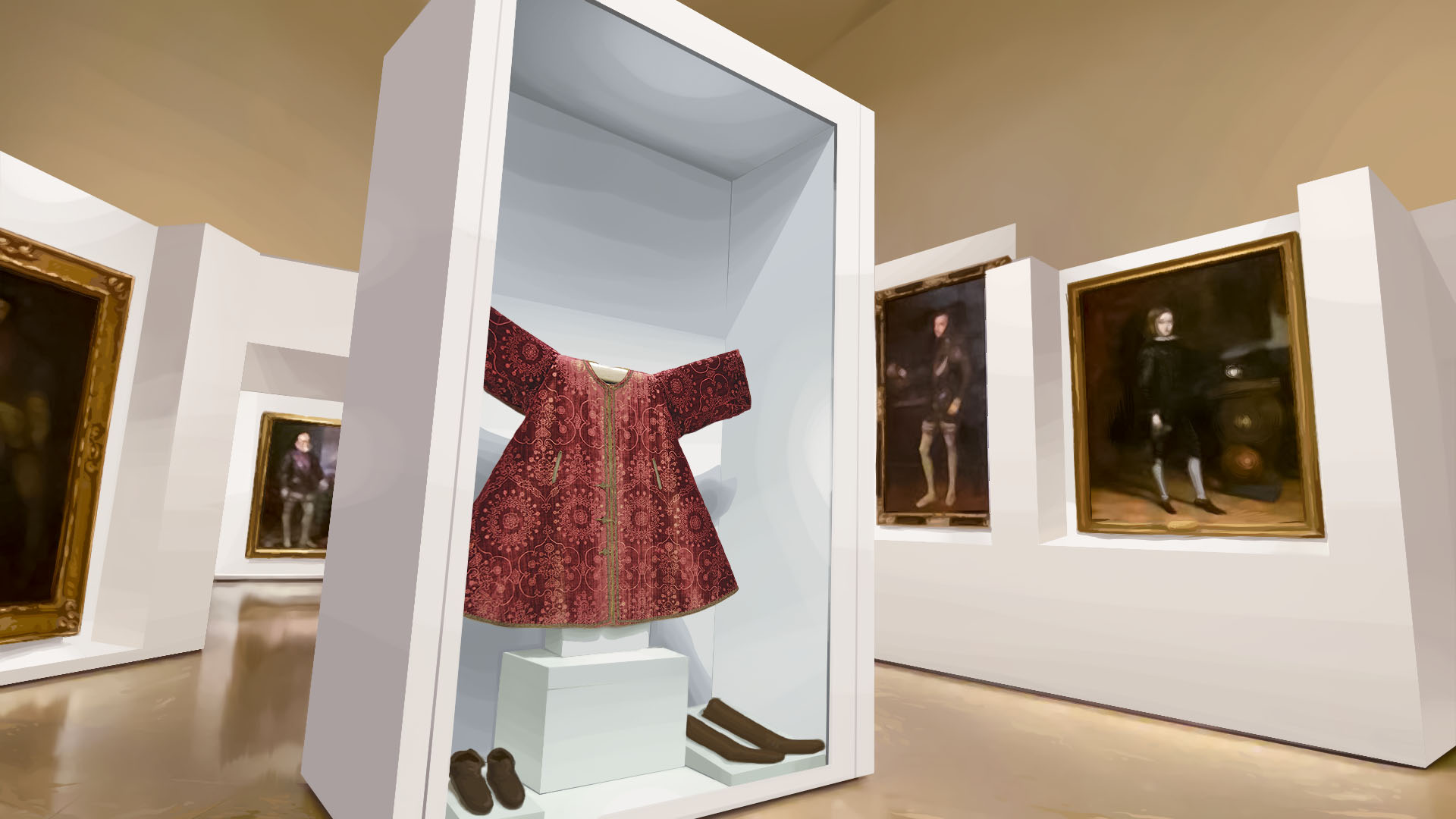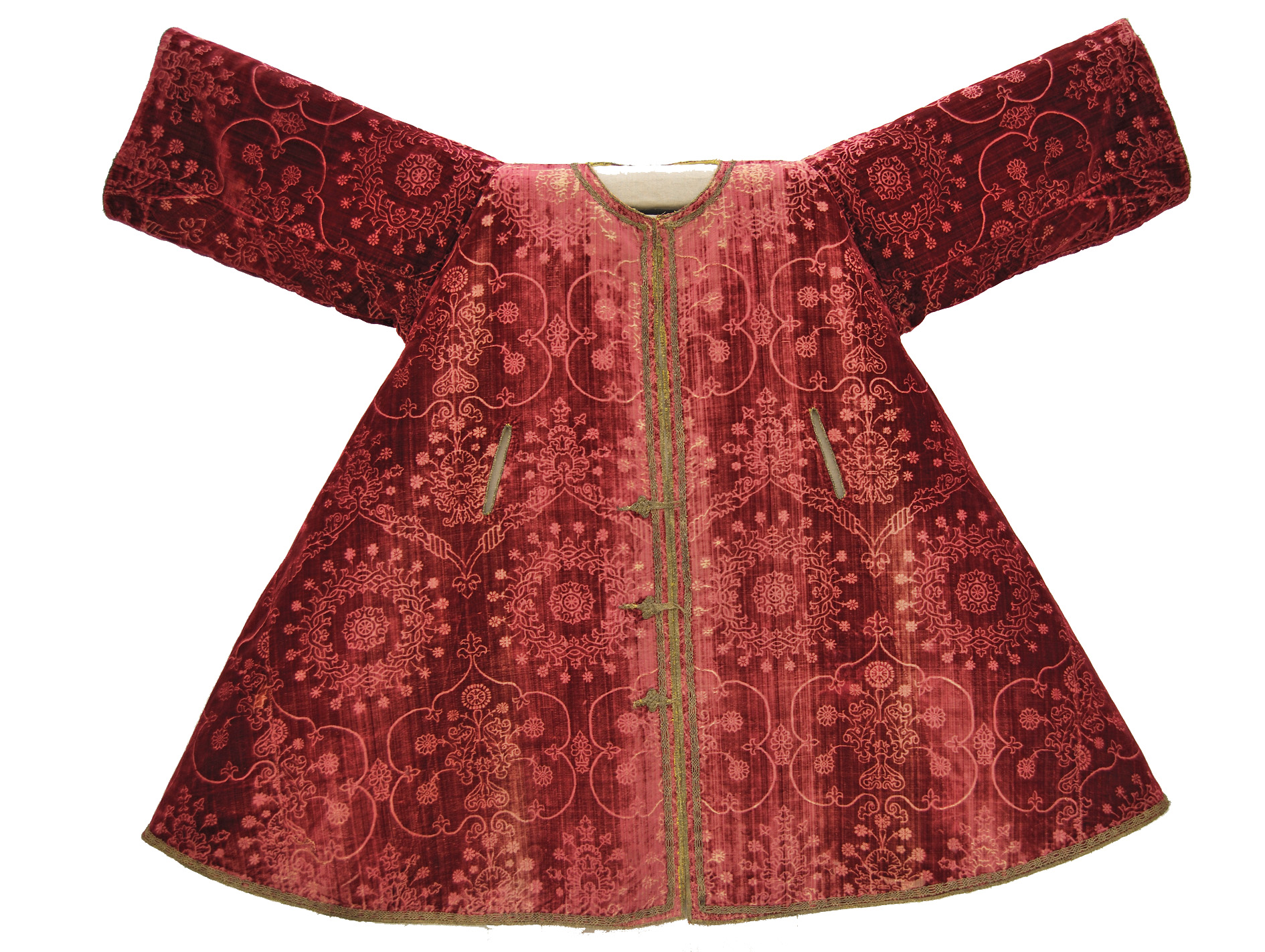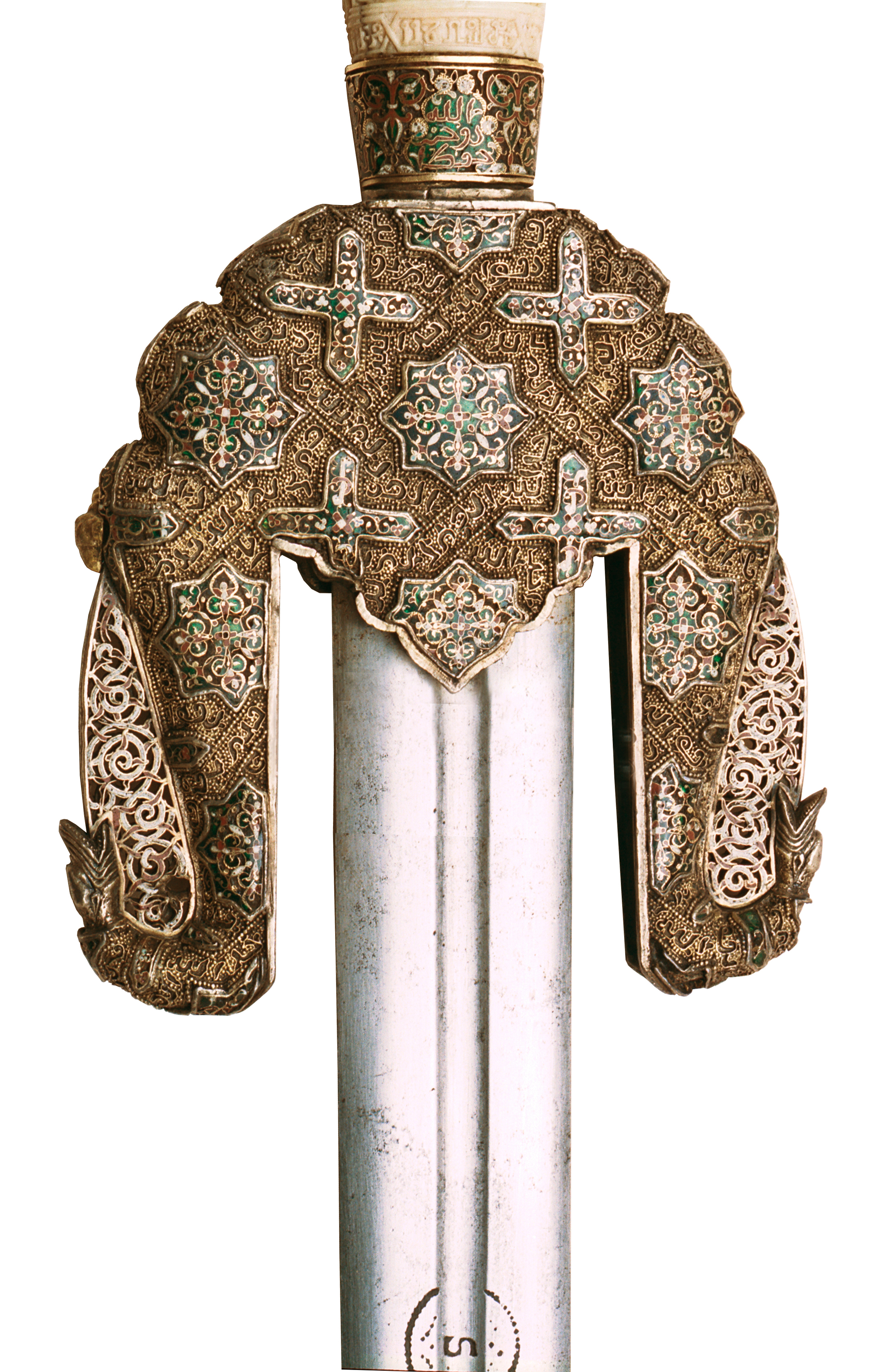

The marlota is a garment of Greek origin. It was widely used by Spanish Muslims in the Middle Ages, especially in winter. This one is woven of very rich materials like silk and linen, and dyed red, which was the colour of Boabdil's family. That tells us that it is a kind of formal dress and showed the power of its wearer.

The jineta sword in the Army Museum is one of the richest examples of Nasrid swords from the medieval kingdom of Granada that have survived until the present day. The museum also holds the jineta sword of Ali Atar, similar to that of Boabdil the Younger.



Other jineta swords are held in museums and international institutions like the Metropolitan Museum of New York, the National Library of France or Spain’s National Archaeological Museum.
The sword is a formal or dress weapon, not meant for combat. It is made of precious metals, enamels and ivory and decorated in great detail, especially in the handle or hilt area, with plant and animal figures and writing in Arabic.
This set of pieces came into the hands of the Catholic Monarchs at the end of the 15th century, and was later given to Diego Fernández de Córdoba as a reward for his role in the war of Granada. He became viceroy and governor of the kingdom of Castile, and many centuries later, in 1904, a descendant of his donated the pieces to the Army Museum, where they have been kept to this day.
Edged Weapons Collection.
As well as the extraordinary jineta swords, the museum has an important collection of bladed weapons dating back to the Renaissance. Most of this collection is of Spanish origin, with interesting examples of swords made in Toledo.
This sword is made of steel and wrought iron wire. Its swept hilt, so called because it sweeps over the hand, is the oldest 16th century hilt. It was used as a military sword but it was also used in civilian life, especially for duels. It was part of men’s clothing of the time, and showed the wearer’s prestige and power.

This type of dagger was used in fencing, together with a sword, and was held in the left hand. Its name comes from the shape of its hilt, which looks like a ship's sail.

A yataghan is a type of bladed weapon of Turkish origin. It was especially made for General Leopold O'Donnell as a gift or reward for his performance in the African War of 1859. It is made of steel and decorated in gold. Its maker was Eusebio Zuloaga, harquebusier to Queen Isabella II.
